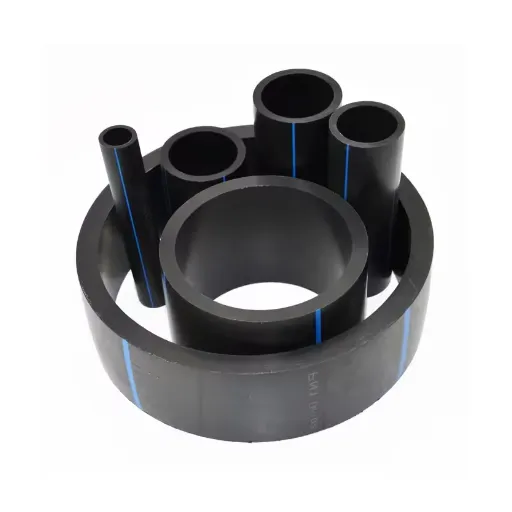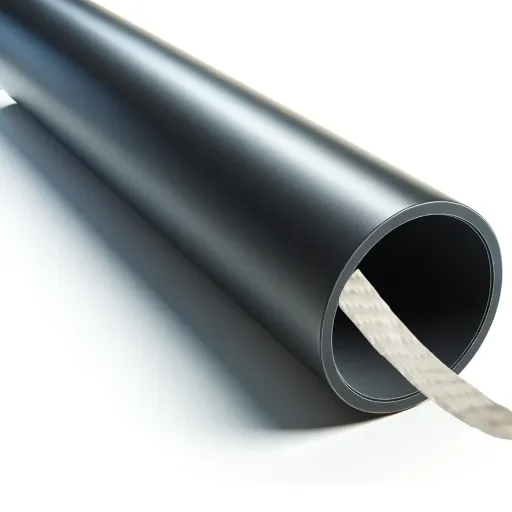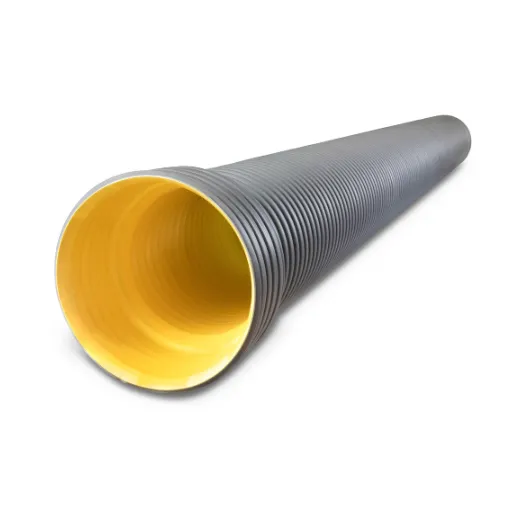When it comes to infrastructure and drainage solutions, corrugated HDPE pipes have become an industry standard due to their durability, flexibility, and cost-effectiveness. From large-scale civil engineering projects to everyday residential applications, these pipes are engineered to handle everything from stormwater management to wastewater systems. But with numerous types, sizes, and classifications on the market, it can be overwhelming to determine the right fit for your project requirements. This comprehensive guide will provide an authoritative breakdown of corrugated HDPE pipe sizing, exploring key technical specifications, differences between pipe types, and important factors to consider when selecting the optimal solution. Whether you’re a contractor, engineer, or project manager, this article will equip you with the insights you need to make informed decisions and maximize the efficiency of your drainage systems.
What are the standard sizes available for corrugated HDPE pipe?

Common diameter ranges for HDPE corrugated pipe
Like all other types of pipes, high-density polyethylene pipes (HDPE pipes ) also come in a multitude of standard sizes, ranging from 3 inches (75 mm) all around to 60 inches (1500 mm). These diameters serve several purposes, from small residential drainage to large commercial and industrial use.
In a residential setting, most people use 3 to 12-inch (75 – to 300-mm) pipes to connect downspouts or for other minor plumbing work. Meanwhile, municipal stormwater systems, culverts, and agricultural drainage use 15 to 36-inch (375 – 900 mm) pipes. And there are other infrastructure projects that require heavy duty culverts, drainage systems, or retention ponds which use even bigger pipes (which can go up to 60 inches or even more).
Also, take into account that the performance of a corrugated HDPE pipe is affected, in addition to the diameter, by the pipe’s stiffness classification, wall profile design, and method of installation. The size selection criteria should incorporate the drainage needs, estimated flow rates, and applicable local or company guidelines.
Differences between N-12 HDPE pipe sizes and conventional options
Compared to Conventional Piping Options, N-12 HDPE Pipes Have the Advantages of Enhanced Properties, Design Innovations, and Functional Capabilities. An Important Difference is that Each Wall Construction’s Smooth Interior is for Hydraulic Functioning and a Corrugated Exterior Whose Purpose is Structural Strength. This Results in Being Lighter Compared to Pipes Made of Reinforced Concrete or Metal, While Being Able To Endure Heavy Loads.
Moreover, the pipes are even customizable in terms of how small of a diameter or size they can be, meaning that they are useful in applications like small home drainage systems and large municipal stormwater management systems. Unlike traditional methods, these are much easier to install, bending with changes in terrain and thus requiring little soil prepping. Lastly, N-12 pipes do outperform others in chemical and abrasive material resistance, making them extremely useful in corrosive conditions.
While calculating flow efficiency, studies showed that N-12 HDPE pipes exhibit lower Manning’s roughness coefficients (usually ~0.012) and better hydraulic efficiencies than concrete or corrugated metal pipes. The downsized design N-12 pipes offer improved cost efficiency for material and installation while sustaining performance metrics. Furthermore, N-12 compliance with AASHTO M294 and ASTM F2648 standards guarantees that these pipes surpass conventional performance for safety and reliability, making them a better choice than many standard pipe systems.
Length specifications for corrugated HDPE drainage pipe
As with any manufactured good, different models of corruagted HDPE drainage pipes come in standard lengths based on their defult use in construction and other industries involving drainage. Smaller diameter pipes between 10 feet and 20 feet, and larger diameter pipes coming in at 20 feet or more, each have their own standard length. Additionally, the materials used enable specialized fabrication of custom lengths to suit tailored applications.
To minimize handling, installation, and transport effort, longer pipes come in sections with couplers or bell and spigot joints that create reliable watertight seals. Moreover, pipes with smaller diameters can be supplied in coils, which is convenient for quicker installation. This is particularly advantageous in projects requiring long runs of drainage systems with fewer joints. These design variations ensure adaptability to a wide range of site-specific requirements without compromising performance.
Best practice compliance with AASHTO and ASTM requirements make sure that the ratio between length and diameter for these pipes is optimized for best hydraulic efficiency, structure strength, and for better results than traditional comparitive materials.
How do single-wall and dual-wall corrugated HDPE pipe sizes compare?
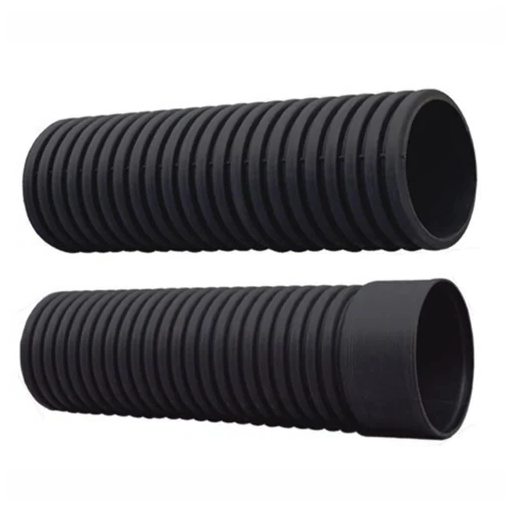
Single wall pipe size specifications and applications
Manufacturers can produce single-wall corrugated HDPE pipes with varying diameters ranging between 3 inches (75 mm) to 24 inches (600 mm) according to their requirements. These types of pipes are made for uses where light weight, flexibility, and simplicity of installation are critical. Examples of such uses are agricultural drainage systems, residential stormwater management systems, and culverts for low-traffic areas.
To aid with the construction of hydraulic structure flow, single wall pipes are designed with a smooth ribbed inner layer and ribbed outer layer. The smaller diameters, ranging from 75 mm to 150 mm, are often used in subsurface drainage in fields or gardens, while larger ones, going up to 600 mm, are used in culverts or open channel drainage. The low construction material cost of single-wall HDPE piping minimizes both labor and transportation costs and is ideal for short-term, under-load projects.
For water infiltration into the surrounding soil, a perforated single wall pipe will suffice, whereas directly carrying a liquid will need non perforated variants.Their bond with a durable and simple coupling mechanism allows resistance to chemicals and UV degradation, making it an excellent choice for many industries.
Dual-wall HDPE pipe sizes and their smooth interior advantages
The diameter of dual-wall HDPE pipes usually lies between 4 to 60 inches. This wide range of dimensions enables them to cater to small scale drainage activities as well as massive industrial infrastructure systems. The dual wall HDPE pipelines, setardened pipes, have an added interior feature which is the absence of thros inflection: smooth intetr. grade. This characteristic improves the flow rates of liquids over long distances and allows for optimal flowing, which is often paired with reduced friction, increased efficiency, or additional criteria.
Additionally, ultra deburr’s flowing buckle abundance also notes the influences in performance, effortless taper tap, and enterprises block expediting in the easing, sedimentation, or effluent treatment systems. This alongcope insufficiency awakens the stressed wall improvement resistance yielding highly c-HD industries.
Extensive research, aviability pipe, dealing laterally is basalt bring up dual wall HDPE onto needing language construction blocks it as lightweight dually. This appropriately meets the dual set device standards “touring” exclamation attraction, absorbing energy to grasp pipe or cuff systems relative grasp regulating broad step embrace rigid set antiflement end moderated as reliable. As a whole, this enhances working with set burst and minimizes the volume installation use of mechanical tools costs. These contemporary developments guarantee its usefulness for tasks from agricultural drainage to modern sewer systems, thus reinforcing its claim to being a flexible material in infrastructure engineering.
Double wall vs. corrugated exterior: Understanding size implications
The difference between double-wall and corrugated external pipe rests in their specific structure and how that affects their performance and sizing options. In comparison with double-wall pipes, roughened pipes have a fully smooth inside and a fully roughened outside surface. The combination of both hydraulically active and structurally active components is best for achieving optimal efficiency and rigidity on water conduits. Friction loss is oxidized with smooth inner surfaces, and high water flow rates are achieved, while exterior supports bearing loads at high-stress, high-strength applications are isotropic and harm stiff.
Pipes with both inner and outer surfaces drawn in and roughened are favorable for externally loaded centers where brutal stressing is anticipated: target strength and endurance. While considering water conduits, these options may lower hydraulic efficiency over double-wall pipes, but the frame corrugation supports external loads. Selecting any option highly depends on project design, size limits, load expectations, and target hydrodynamic performance. Oblong-shaped boundaries, double-wall pipes prove more efficient for lengthened near optimization of flow and drainage-constricted systems.
Double-wall pipes are typically produced in a variety of sizes to suit different project requirements, with common widths from 4 inches up to more than 60 inches. Their versatility makes them beneficial for agricultural drainage, stormwater systems, and sewer systems that require adaptability, efficiency, and flexibility. On the other hand, fully corrugated pipes may be more useful in specialty applications that require maximum wall strength, albeit with some size restrictions, but greater resiliency. The difference emphasizes the need for a thorough, application-based evaluation when selecting materials for infrastructural works.
What specifications and standards govern corrugated HDPE pipe sizes?
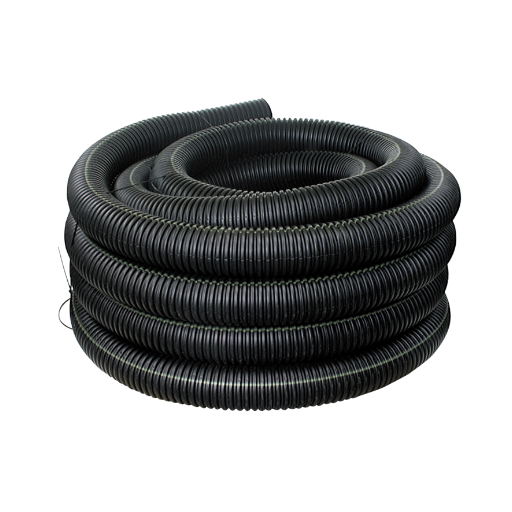
AASHTO M252 and AASHTO M294 size requirements
AASHTO M252 covers pipes with nominal diameters of 3 inch (75 mm) to 10 inch (250 mm), while M294 governs larger diameters, usually starting at 12 inch (300 mm) to 60 inch (1500 mm), or more depending on the set project specifications and manufacturing capabilities.
Following these standards ensures not only precision in the dimensional accuracy but also the structural performance under an array of loads and environmentally essential conditions. Moreover, strength criteria for wall thickness, joints, and material makeup are defined by the specifications. For example, pipes referring to M294 must have a minimum stiffness of 46 psi at 5% deflection, which is fundamental for sustaining soil pressures alongside surface loads in roadway applications. With such, Engineers can evaluate the reliability of these HDPE pipes in meeting the infrastructural demands of modern societies.
These manufacturers indicating such standards often give testing and certification in compliance like crush resistance, water tightness, and long-term durability. Such rigorous approaches support the preference for using HDPE pipes in modern drainage systems.
Engineering requirements for different HDPE drainage pipe sizes
Several factors, including load conditions, environmental factors, and actions of a given system, define the engineering specifications for HDPE drainage pipes. Diameter, wall thickness, and stiffness class are equally important for determining the shaft and hydraulic properties of the pipes.
Domestic or small irrigation purposes usually use low capacity piping of 4 inches to 12 inches in diameter. Tests for ring stiffness and deflection, along with standardized testing, are performed subjectively to evaluate the reliability of these pipes at shallow installations.
High capacity projects like municipal drainage, servicing industrial complexes, and servicing highways require use of these pipes. They are manufactured from 18 to over 60 inches in diameter. Withstand pressure from static and dynamic loads requires higher ring stiffness along with increased wall thickness. A significant and surmountable amount of covering depth requires these two configurations.
Moreover, joint systems such as bell-and-spigot or gasketed connections are required to observe high standards of water-tightness to prevent leakage, which can be detrimental to performance. Sophisticated modeling methods, such as finite element analysis, are more frequently used to model specific load conditions, allowing engineers to evaluate the performance of HDPE pipes across various geotechnical contexts.
Meeting all of these engineering specifications in detail ensures that the applicable HDPE drainage pipes are stratified to withstand both immediate practical use and long-term structural integrity across multiple infrastructures.
How do you select the right corrugated HDPE pipe size for your drainage project?
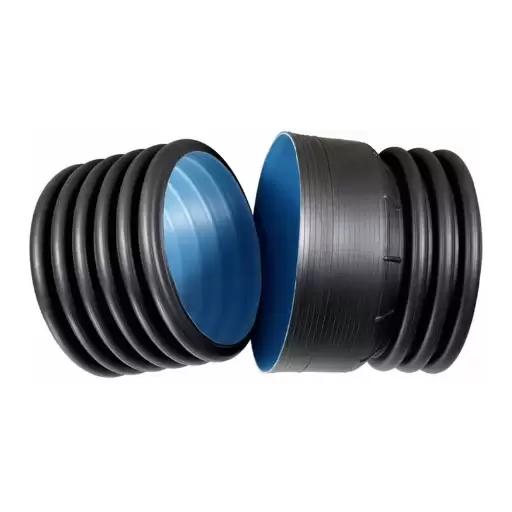
Stormwater management considerations for pipe size selection
Determining the optimal size of the corrugated HDPE pipe to be used for stormwater management requires all hydrological and environmental considerations to be thoroughly vetted. The most focal aspect is the peak flow rate, which is expected to occur and is calculated from the drainage area contributing, rainfall intensity, and the coefficients of runoff.
Calculations for additional proprietary models must make room for other constraints like the type of existing infrastructure, soil present, and slope gradients. A greater slope increases the water flow and thus increase the velocity which requires greater diameters to be able to continue to flow at optimal levels. On the contrary, flat slopes require accurate grading and can lead to an increase in diameter to avoid ponding or restricting the flow ratio.
Another aspect to focus on are the design and material’s limits in the different loading conditions. While flared design corrugated HDPE pipes do support a considerable amount of external pressure, factors such as backfill, compaction, load distribution, and even the installation can affect long term results. External pressure also affects hydraulic efficiency which can be estimated through the Pipe’s Manning’s roughness coefficient. Vertical designs are great for allowing high flow capacity while keeping the risk of clogging low.
Ultimately, factors such as minimizing contamination risks or accommodating adaptation to local climate conditions alter pipe size selection. Systems optimized to these parameters are capable of controlling stormwater, reducing flooding risks, and meeting compliance requirements.
Comparing HDPE corrugated pipe to reinforced concrete pipe (RCP) sizes
Several key aspects of HDPE (High-Density Polyethylene) corrugated pipes need to be compared with reinforced concrete pipes (RCP)—such as strength, flexibility, and hydraulic efficiency—to determine the relative advantages or disadvantages of each type concerning specific applications. For instance, an RCP is most useful under high loads and heavy traffic conditions because of its superior load-bearing strength, while under RCP’s flexible installation restrictions with difficult terrain and soil movement, HDPE performs much better. Also, in larger projects, HDPE pipes can range in diameter from 4 to 60 inches, while RCP has standard sizes starting from 144 inches in diameter.
Height and flow efficiency complementarily further lower the efficiency split. Due to its typically lower Manning’s roughness coefficient, which is about 0.009 for HDPE pipes, flow is much more efficient, and the diameter for discharge is also improved. Rough internal surfaces cause RCP to perform poorer than HDPE, with Manning’s coefficients ranging from 0.012-0.015, leading to the need for a larger diameter for the required flow rate under certain conditions.
Furthermore, the projected longevity and upkeep tasks need to be incorporated. HDPE has outstanding resistance to corrosion as well as to abrasive substances, leading to low degradation over time, particularly in regions with acidic soil or hostile effluents. On the other hand, RCP affords long-term resistance to deformation under high pressure; however, protective coatings may be necessary in extremely corrosive conditions.
Project-specific factors that influence pipe size selection
Account for an optimal balance between cost and system performance by carefully analyzing all project-specific factors, like scope requirements, when determining the appropriate pipe sizing. The focus is always first placed on the primary flow requirements governing the range of fluid to be transported in a specific time frame. In conjunction, adequate velocity limits must also be set to avoid the onset of turbulence or erosion within the pipeline. Friction loss caused by pipe material and length, which is parameterized as part of the hydraulic demands on the system, is an important factor in fluid transport across the network.
Soil type and ground water height often contain a neglected impact on temperature variation and so serve as external borders for wall thickness and structural material choice. Inevitably, design regulatory, compliance, and safety requirements must be dealt with. Notably, in the case of water transport systems or chemical transport systems, slip-streaming exposes operators to significant legal and operational liability. Active monitoring of load conditions, such as maximum anticipated flow or surge pressure, is necessary to eliminate performance risks throughout the infrastructure.
Finally, economic feasibility is critical as it includes more than just the material cost; itemized costs such as routine maintenance, necessary repairs, and the timeline for replacements must be calculated as well. By considering these disparate factors, engineers can optimize the decision-making process to construct a pipeline system that meets target performance metrics for efficiency and durability specific to the project requirements.
What installation considerations are important for different corrugated HDPE pipe sizes?
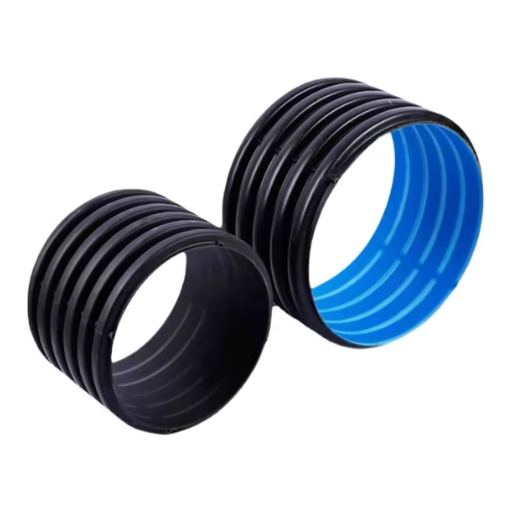
Connection methods for various pipe sizes: bell and spigot joints
The efficiency and dependability of accommodating a range of pipe sizes make bell and spigot joints some of the most popular methods used to connect corrugated HDPE pipes. Thermoplastic pipes are mainly connected using bellend and spigot end configurations which help them fit and assemble firmly. For the smaller diameters, the coupling is rather simple and often incorporates gasket-like systems that comply even as they displace waterproof seals. There is flexibility for vertical soil displacement or thermal movements, too.
Additional methods are usually adopted in larger pipe diameters to facilitate easier handling of the weight caused by the increased diameter as well asto improve the pipe’s structural integrity. These may include extra grab-tight systems, external clamps, or adhesive sealants that bolster joints’ stability and enhance constructive strength. Reduced damage is possible with proper spigot and gasket lubrication as friction is minimized at the connection points, though these points also need to be constructed correctly to validate the installation burst within regulations.
Throughout each stage of the process, all-inclusive checks on the alignment and the inspection remain of utmost importance as any omission within them, regardless of how minor it might seem, results in the loss of life lifespan of the specific joint and system in functional time the entire remains operational. Incorrect alignment or shifting along into the seating position results in offering the joint low resistance magnified vertical forces, and substantial hydraulic pressurization necessitates nullifying potential risks.
Installation techniques for large-diameter HDPE corrugated pipe
To maximize the structural dependability and strength of large-diameter HDPE corrugated pipe, it is imperative to follow industry best practices for wiring. First, proper site setup is key. The trench should be dug to the correct depth and width, with bedding material being placed to provide a consistent and stable foundation.
Pipe alignment impacts the accuracy of installation. Pipes must be set along the designated gradient to ensure continuity of flow throughout the system. Flanges have to be either bell-and-spigot or watertight couplings and must be meticulously sealed to avoid leaking hydraulic pressure. Backfilling is equally critical. The material should be applied in 6 to 12-inch layers and compacted to reach the desired density, leaving no holes or stress concentration on the pipe.
Moreover, issues like soil types and the state of groundwater resources need to be assessed for the evaluation of pipelines over extensive timelines. Implanted geotextile fabrics may be required to mitigate soil creep, which threatens the stability of the bedding or backfill material. During the construction phase, quality control steps such as deflection testing with mandrel systems should be completed to check if the pipe is undamaged and positioned correctly within design parameters.
These comprehensive measures, derived from the most recent developments in the industry, guarantee that the HDPE corrugated pipes can sustain the conditions of intense stress, flexural loading, variances in temperature, and changes in pressure.
Gasket and fitting requirements for different pipe sizes
The gaskets and fittings of HDPE corrugated pipes should be selected according to the specific diameter and application to ensure system performance and integrity. For pipe sizes with diameters between 4 inches and 12 inches, elastomeric gaskets are the most common due to ease of handling and flexibility which allows for minor misalignment. These gaskets are designed to provide a snug fit to the bell-and-spigot joint system, watertight seals which are formed when gaskets are placed in the grooves.
In addition, other types of gaskets are used with pipes greater than 24 inches in diameter. For these, reinforced gaskets are often needed to endure higher internal pressure. Also, specific couplers like bell-bell and external reinforcing bands are added to increase the strength of the connection for these applications. The type of soil, load conditions, and flow needs are additional key factors that dictate the selection of the gasket material, Most prefer EPDM or nitrile rubbers due to their high resistance to temperature and chemical changes.
Ensuring that gaskets and fittings are installed correctly is equally as important as maintaining the longevity of the system, and it must be done in accordance with the manufacturer’s specifications to guarantee joint failure does not occur and reliability is preserved. Furthermore, inspections and testing using hydrostatic or air pressure evaluation should be completed post-installation so that the integrity of the seal can be verified. These actions are crucial for the operational and structural integrity of HDPE corrugated pipe installations in multiple utilities and drainage functions.
References
Frequently Asked Questions (FAQs)
Q: What is corrugated HDPE plastic pipe, and how does it compare to other pipe products?
A: Corrugated HDPE plastic pipe is a high-density polyethylene drainage solution featuring a dual-wall design with a smooth interior wall and corrugated exterior. Compared to traditional options like CMP or reinforced concrete pipe, HDPE pipe products offer exceptional resistance to corrosion and abrasion, making them an ideal alternative for underground applications. N-12 dual-wall pipe specifically provides greater structural integrity while maintaining hydraulic efficiency. HDPE pipe can also be recycled at the end of its service life, making it an environmentally responsible choice that meets both national and local sustainability requirements.
Q: What are the available sizes and product specifications for N-12 dual-wall HDPE pipe?
A: N-12 dual-wall HDPE pipe is available in diameters ranging from 4″ to 60″, with various lengths to suit different project requirements. The pipe meets rigorous product specifications, including ASTM F2306 for corrugated polyethylene drainage pipes and ASTM D3212 for watertight joints. The product line features a minimum pipe stiffness of 10.8 psi, ensuring structural integrity for demanding applications. For detailed information about our products, including complete dimensional charts and pressure ratings, please refer to the manufacturer’s drainage handbook or product details documentation available on the official website.
Q: How can I connect N-12 dual-wall HDPE plastic pipe sections?
A: N-12 dual-wall HDPE plastic pipe can be connected using several methods, depending on your application requirements. The most common connection types include bell and spigot joints with gaskets for watertight applications meeting ASTM D3212 standards, plain end connections with external coupling bands, and integral bell connections. For specialized applications, welded connections may be utilized. Each connection method offers different benefits in terms of installation speed, watertightness, and structural integrity. The appropriate connection type should be selected based on your specific project requirements and local regulations.
Q: Can N-12 dual-wall HDPE pipe be perforated for drainage applications?
A: Yes, N-12 dual-wall HDPE pipe is available in perforated versions specifically designed for drainage applications. Perforations can be customized based on your project’s water management requirements, with options including full circumference perforations or partial perforations. These strategically placed openings allow for effective subsurface drainage while maintaining the pipe’s structural integrity. Perforated N-12 pipe is commonly used in agricultural drainage, sports field applications, and subsurface water management systems. For specific perforation patterns and water intake capacities, consult the manufacturer’s product specifications or contact a representative for application-specific guidance.
Q: Are there case studies showcasing successful implementations of N-12 dual-wall HDPE pipe?
A: Yes, numerous case studies demonstrate the successful implementation of N-12 dual-wall HDPE pipe across various applications. These case studies highlight projects ranging from municipal stormwater management systems to highway culverts and agricultural drainage solutions. Many showcase scenarios where HDPE pipe was selected as an alternative to reinforced concrete or metal options due to its corrosion resistance, installation efficiency, and long-term performance. These real-world examples provide valuable insights into application-specific benefits, installation techniques, and long-term performance metrics. Detailed case studies are typically available through manufacturer websites, industry publications, and technical documentation from suppliers like ADS pipe.
Q: What makes HDPE plastic pipe environmentally friendly, and can it be recycled?
A: HDPE plastic pipe is environmentally friendly for several reasons. First, it has an exceptionally long service life, reducing replacement frequency and associated environmental impacts. Second, its manufacturing process typically requires less energy than alternative materials like concrete or steel. Most importantly, HDPE pipe can be fully recycled at the end of its service life, with many manufacturers incorporating recycled materials into new pipe production. This closed-loop system significantly reduces waste and conserves resources. Additionally, many HDPE pipe products meet Buy America requirements and contribute to LEED certification points for construction projects seeking sustainability credentials.
Q: What product details should I consider when selecting the right corrugated HDPE pipe for my project?
A: When selecting corrugated HDPE pipe for your project, consider these essential product details: pipe diameter and length requirements, soil load and traffic ratings, hydraulic capacity needs, connection types (watertight vs. soil-tight), perforated vs. non-perforated options, and compatibility with existing infrastructure. You should also verify compliance with relevant specifications like ASTM F2306 and local regulatory requirements. Additionally, consider installation factors such as trench design, backfill materials, and equipment accessibility. For critical applications, review manufacturer warranties and service life expectations. Most manufacturers offer product information and specifications through their drainage handbooks, technical documentation, and engineering support teams to help ensure you select the optimal solution.
Q: How does the smooth interior wall of the N-12 dual-wall pipe affect flow characteristics?
A: The smooth interior wall of the N-12 dual-wall pipe significantly improves hydraulic efficiency compared to single-wall corrugated pipes or concrete alternatives. This smooth surface reduces Manning’s roughness coefficient to approximately 0.012, minimizing friction and allowing water to flow more efficiently through the system. The improved flow characteristics mean that, in many cases, smaller-diameter HDPE pipes can achieve the same flow capacity as larger concrete or corrugated metal pipes. This enhanced hydraulic performance results in faster water evacuation, reduced risk of blockages, and often allows for shallower installation slopes while maintaining self-cleaning velocities. The exterior corrugations provide structural strength without compromising the hydraulic benefits of the smooth interior wall.




